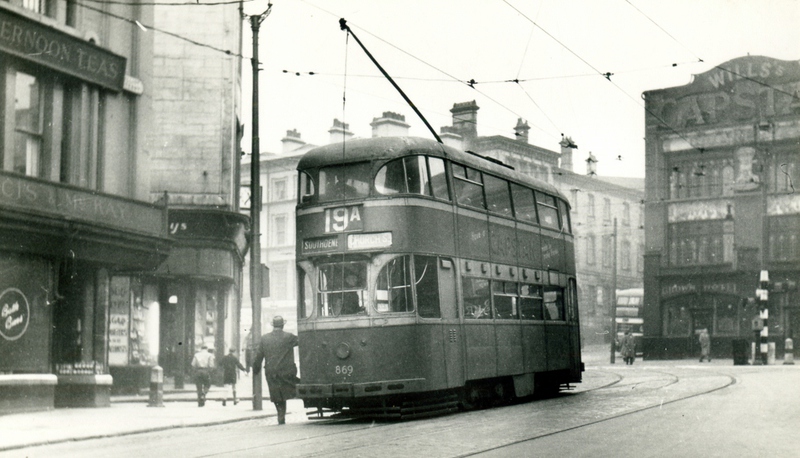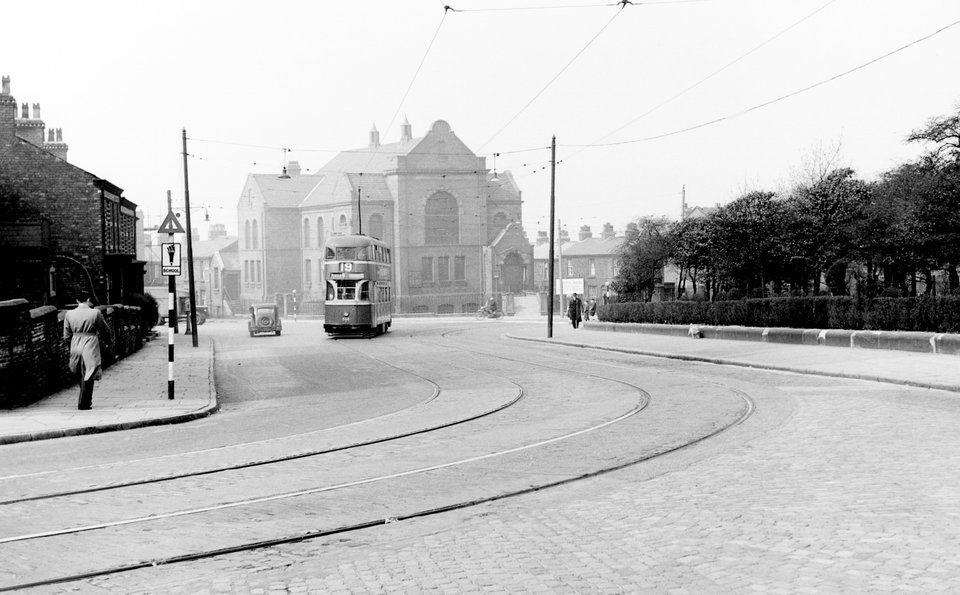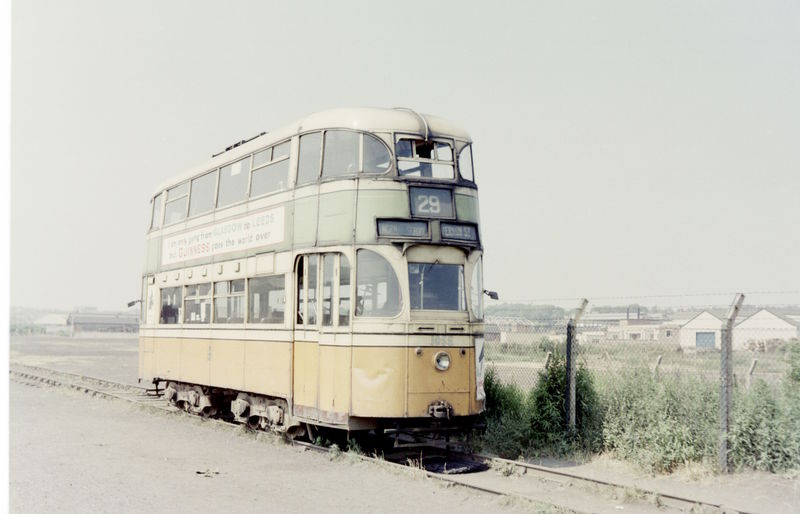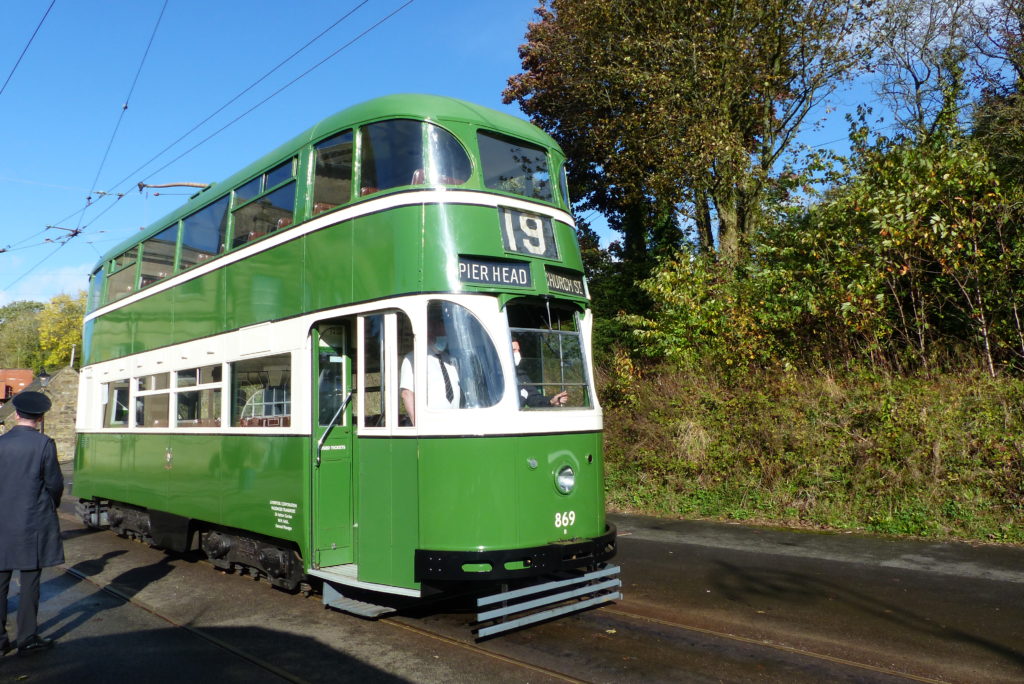Liverpool Corporation No. 869
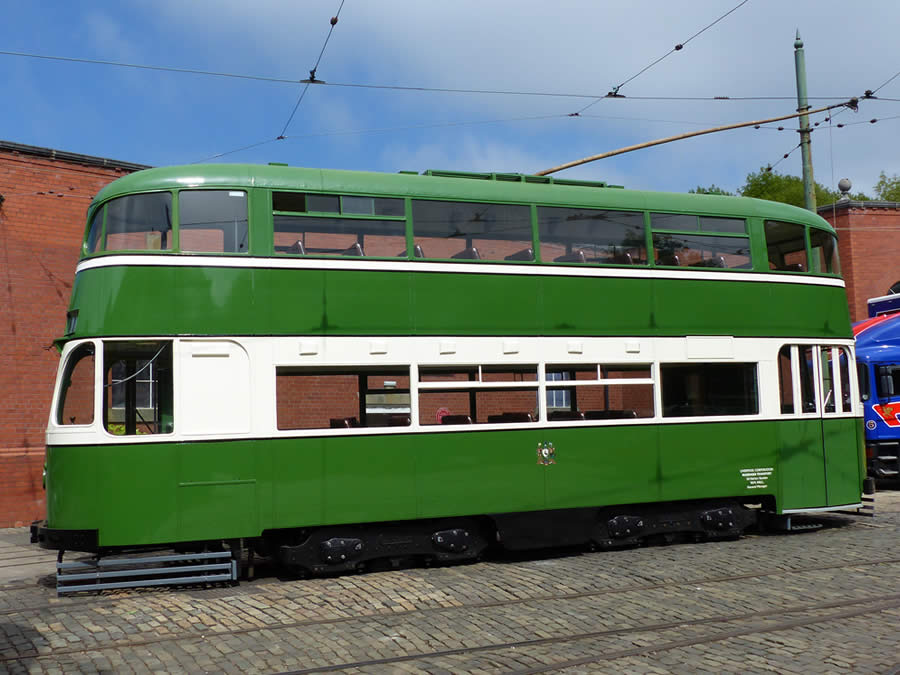
Photo: Jim Dignan
Liverpool was one of Britain’s first generation tramway ‘giants’, being the third largest system in England with 97 miles routes by the end of the war and a fleet of some 744 tramcars, of which a significant number had been built in the 1930s. The city also had 27 miles of segregated tracks, the first section of which opened in 1914 and the last in 1944. Most of these ‘grass tracks’ were built in the centre of broad dual carriageways and were designed as an integral part of a series of new suburban housing estates which enabled the Corporation to move thousands of residents from densely-packed inner-city ‘slums’.
In contrast with many other major British cities, Liverpool was actively investing in its tramway during the 1930s by building new routes and renewing its fleet with more modern cars. The performance of 12 double-decker bogie cars which entered service in 1931/2 radically transformed the public attitude towards the city’s trams as these 70-seat air brake cars were fast, comfortable and represented a clear departure from the rather conventional looking four wheel vehicles that had previously provided the backbone of the fleet.
Further groups of increasingly modern cars with state-of-the-art running gear were built on a production line basis at the Corporation’s Edge Lane works between 1933 and 1936. These were also painted in a striking livery of olive green and cream which quickly earned them the name ‘Green Goddesses’ after a popular film of the period.
Specification
- Type of tram
- Electric, double deck, fully enclosed streamlined bogie tramcar
- Livery
- Olive green and white ('ivory')
- Seating capacity
- 78 (34 downstairs; 44 upstairs)
- Date built
- 1936
- Manufacturer of body
- Liverpool Corporation.
- Manufacturer of truck
- EMB Class 8 radial-arm bogies
- Gauge
- 4’ 8½”
- Motor
- GEC WT184 4 x 36hp
- Controller
- Metropolitan Vickers Electropneumatic
- Current collector
- Trolley pole with swivel head (was fitted with bow collector while in Glasgow)
- Modification
When rehabilitated in the early 1950s the original non-slip floor was replaced with wooden slats. On moving to Glasgow it was fitted with bow collector, new lifeguards and trafficator lights. The fenders it had been equipped with in Liverpool were removed.
- Withdrawn from service
1954 in Liverpool, entering service in Glasgow as 1055 on 2 November 1955. Finally withdrawn from service in June 1960.
- Subsequent history
Initially purchased by Liverpool University Public Transport Society, ownership then passed to the Merseyside Tramway Preservation Society. After a series of moves (to Leeds, Crich and Liverpool) an initial restoration was undertaken within Liverpool’s Green Lane depot.
- Restoration history
Following the discovery of further serious defects ownership passed to the TMS who eventually completed the major task of restoring the car to operational condition in January 1993.
- Current status
- Restored in operational condition. Commissioned for service as part of the operational fleet during the current season.
- Date started operating at Crich
- 1993. Has operated in 27 seasons, most recently in 20223.
- Total mileage covered at Crich
- 17,638
- Current location
- Depots
- 1936 – 1954Operational on original tramway
- 1954 – 1960Operational on a different tramway
- 1960 – 1979Undergoing restoration
- 1979 – 1990On display at Crich
- 1990 – 1993Undergoing restoration at Crich
- 1993 –Operational at Crich

